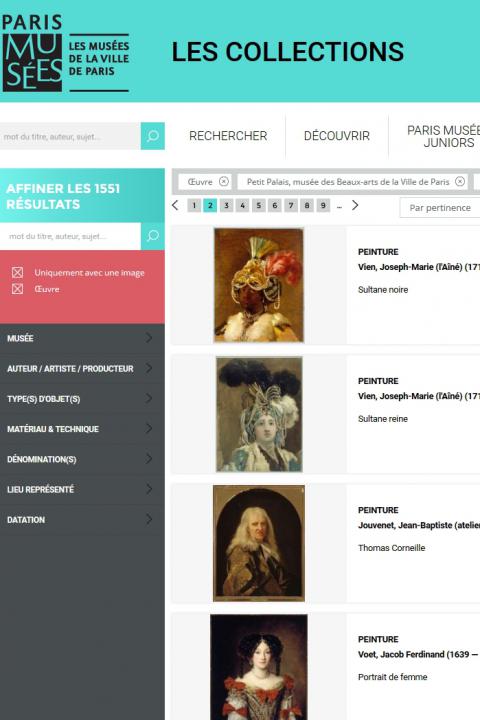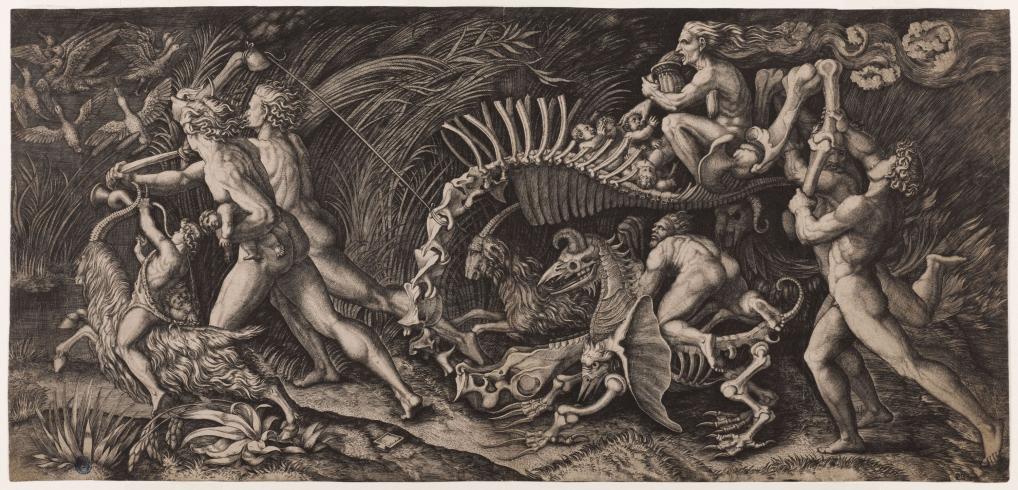Born circa 1480 near Bologna, the young Raimondi later joined the studio of Francesco Squarcione, known as “Francia”, where he learned the art of niello and engraving. He soon created his first personal works and reproduction engravings of his master’s works.
While staying in Venice around 1506, he copied 69 of Albrecht Dürer’s engravings and did not hesitate to sign them with the monogram of the German master. According to Vasari, he was accused of forgery by the seigneury of the city, after Dürer lodged a complaint against him.
In 1508, he stayed in Florence where he engraved the Climbers based on The Battle of Cascina by Michelangelo. He settled in Rome in 1510 and became friends with Raphael, becoming his favourite engraver, which gave him a crucial role in the history of reproductive engraving. The masterpiece of this period was the Massacre of the Innocents.
Ruined by the sack of Rome (1527) during which his studio was destroyed, Raimondi took refuge in Mantua and then in Bologna, where he died in poverty before 1534.
The engraving of this remarkable piece was ascribed to Marc-Antoine Raimondi, after being for a long time attributed to Agostino Veneziano (1490-1540), the artist’s pupil, whose role was probably limited to completing the plaque, before adding his monogram to it (2nd state).
Various names have been suggested for the inventor of this scene, such as Raphael, Giulio Romano and, recently, Girolamo Genga. Obscure in origin, the various elements of this diabolical scene retain a sense of mystery.
Perched on a monstrous carcass, a witch, a copy of the one created by Dürer in 1500, is pitilessly sacrificing infants to make them into evil potions and unguents.
Four muscular men, one of whom is holding a frightened child against him, are pulling and pushing the monstrous chariot amidst reeds and frightened birds. This formidable procession is joined by a ram, a feathered monster and the skeleton of a griffin being grasped by a nude old man. A young boy, carrying terrified children in his bag, is riding the goat of Satan and blowing on a buccin.
Various beliefs on witchcraft seem to be materialised in this fantastical image: its infanticide practices, sinister Sabbaths and the nocturnal processions of the goddess Diana Hecate, whose shrines were located in marshy places.
S. R. de B.

City of Paris municipal collection's website
The collections portal can be used to search the collections of Paris’s 14 municipal museums (approximately 336,000 works, including 43,000 belonging to the Petit Palais).
It is also possible to download around 12,000 images of the museum’s works free of charge.
Access the Museums of the City of Paris collections portal
Extern databases
Discover a selection of databases online presenting works from the Petit Palais or documents concerning the history of the museum.

